External abdominal oblique muscle
What is the External abdominal oblique muscle?
The external abdominal oblique muscle is one of the four muscles that make up the abdominal wall. It is located on the lateral sides of the abdomen and is the largest and most superficial of the three flat abdominal muscles.
The external abdominal oblique is a paired muscle situated on the lateral sides of the abdominal wall. Other muscles are the internal abdominal oblique and transversus abdominis muscles as well as the lateral abdominal muscles. In a more extensive picture, these muscles make up the anterolateral stomach wall along with two foremost abs; the pyramidalis and rectus abdominis.
Together, the abdominal muscles compress the abdominal viscera and produce spine movements. When the trunk contracts unilaterally, the external abdominal oblique in particular causes ipsilateral lateral flexion and contralateral rotation. The trunk is flexed anteriorly during bilateral contraction, which helps with breathing, singing, and defecation by increasing intra-abdominal pressure.
Origin
It arises from the external surface of the lower eight ribs 5-12.
Insertion
The majority of posterior fibers are directed vertically, while some are directed anteromedially.
The external oblique inserts into the linea alba, the anterior half of the iliac crest, and the pubic tubercle as an aponeurosis at the midclavicular line superior and spins the umbilical line inferiority.
Location: The external abdominal oblique muscle is situated on each side of the torso, extending from the lower ribs to the linea alba (a fibrous band that runs down the midline of the abdomen) and the iliac crest (the upper border of the hip bone).
Relations
The external oblique muscle is the largest and most superficial of the lateral abdominal muscles. It covers the internal abdominal oblique, anterior rib halves, and intercostal muscles beneath the thoracic and abdominal skin. The musculoskeletal portion of it contributes to the lateral abdominal wall. However, its aponeurotic portion also contributes to the anterior layer of the rectus sheath and the anterior abdominal wall.
The muscle’s posterior margin is free, while the medial, inferior, and superior margins are connected to their respective attachment points. The other lateral abdominal muscles, on the other hand, all connect to the thoracolumbar fascia at their posterior ends. The inguinal ligament (of Poupart), which forms the floor of the inguinal canal, is the thick curve or channel formed by the portion of this muscle’s inferior margin that curves posteriorly between the ASIS and pubic tubercle.
Innervation
The anterior rami of the thoracic spinal nerves T7-T12 innervate the external abdominal oblique. These are the subcostal nerve (T12), which innervates the lower part, and the intercostal nerves (T7-T11), which supply the uppermost portion of the muscle. The iliohypogastric nerve (L1) transmits sensory information to the muscle from the lumbar plexus.
Blood supply
The deep circumflex iliac artery supplies the inferior third of the external abdominal oblique muscle, while the lower posterior intercostal and subcostal artery branches supply the upper two-thirds of the muscle.
Function of External abdominal oblique muscle
Depending on whether it contracts unilaterally or bilaterally, the external abdominal oblique muscle performs a variety of tasks. It rotates the trunk to the opposite side when acting unilaterally and in conjunction with the contralateral internal abdominal oblique. It contributes to trunk lateral flexion on the same side by working with the abdominal and back muscles on the ipsilateral side.
The muscle flexes the trunk anteriorly when contracted bilaterally in conjunction with the internal abdominal oblique and rectus abdominis muscles. In addition, this activity contributes to a variety of physiological processes by raising positive intra-abdominal pressure and the tone of the abdominal wall; such as labor, micturition, forced exhalation, and defecation.
Clinical Relevance
When there is bilateral muscle weakness, anterior pelvic tilting from a standing position can be seen and trunk flexion is reduced.
Trigger points: Trigger points in the abdominal obliques can occur as a result of emotional stress, additional load during exercise, new exercise, an incision, direct trauma, or secondary visceral pathology. The most typical obliques trigger point locations are:
Pain that runs diagonally across the abdomen, groin, and genitalia is referred to in the lateral lower quadrant of the abdominal wall close to ASIS.
Pain in the lower chest and upper abdomen that can be mistaken for heartburn is located below and lateral to the sternal xiphoid process.
External oblique muscle exercise
Half-crunch heel touches
The flexion and lateral flexion of your core muscles are the focus of this exercise. Crunch to the side as you reach to tap your heels and climb high enough to lift your shoulder blades off the ground.
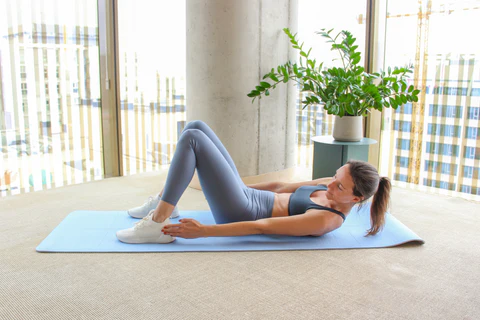
High side plank / Tall side plank
Your anti-lateral flexion strength will be improved as a result of this core-strengthening exercise. When compared to the standard side plank, this is a progressive exercise.
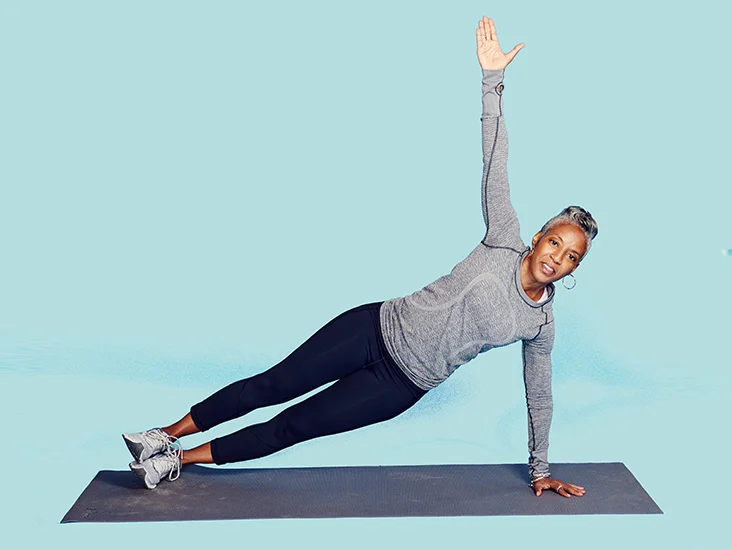
Side crunch
lateral flexion movement is a core exercise that targets and strengthens the obliques.
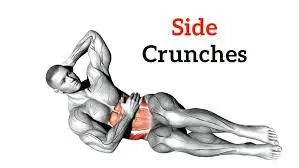
Spiderman pushup
The pushup exercise is performed in this more advanced version. Perform a pushup while raising one knee to reach for the elbow on the opposite side. Switch sides and repeat as necessary.
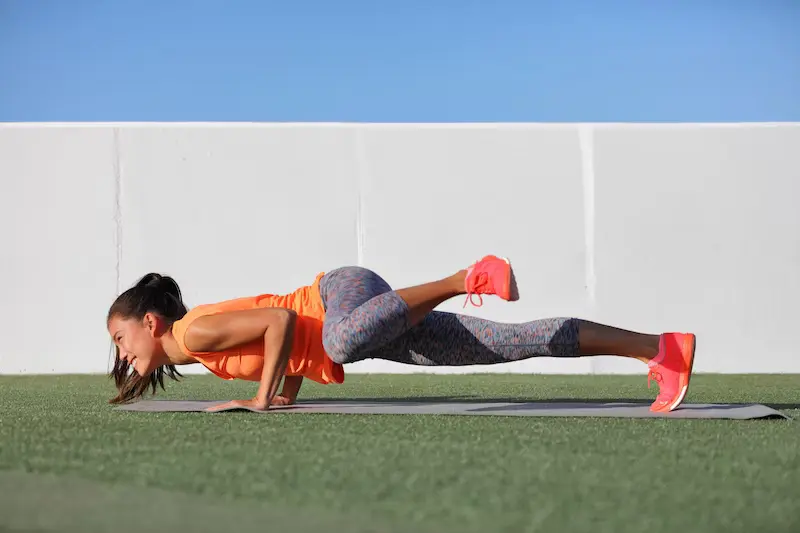
Half side plank
For the spine’s lateral flexors (anti-lateral flexion), this is a core stability exercise. Begin by supporting the body with one elbow and knee in a half-side plank position. Ensure that the hips and shoulders are squared to the front while maintaining a neutral spine.
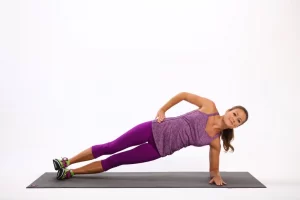
Side plank
For the spine’s lateral flexors (anti-lateral flexion), this is a core stability exercise. Start by supporting the body with one leg and an elbow in a side plank. Ensure that the hips and shoulders are squared to the front while maintaining a neutral spine.
Multifidus twist
This is a proprioceptive and range control exercise for the low back. Start by getting into a quadrupedal position and using a yoga block, lift one knee off the ground. Begin by lifting the unplanted knee off the ground while keeping your pelvis level. Return to a neutral pelvis rotation by gently tapping the padding on the floor with your floating knee.
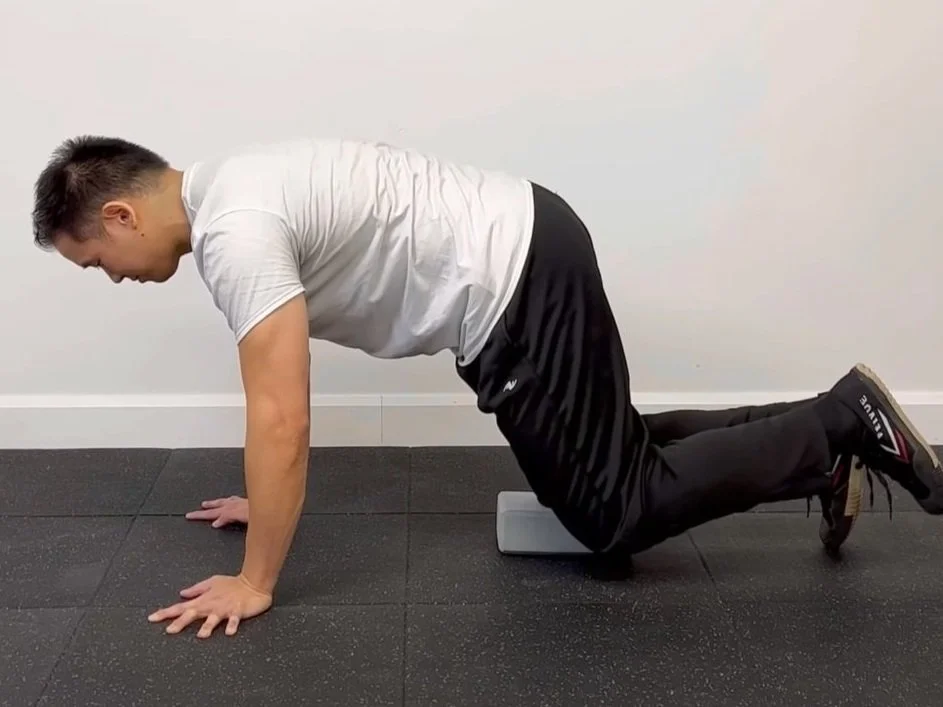
High to low split squat chop
This is a spinal rotator strengthening exercise. While you are kneeling in a split squat, attach a strength band to a stable object that is just above your head. Start by raising your hands to about shoulder height and rotating your trunk in the direction of the band. While rotating through the trunk, keep your elbows straight and lower both hands towards the opposite hip. To focus on your core muscles, keep your hips pointing forward.
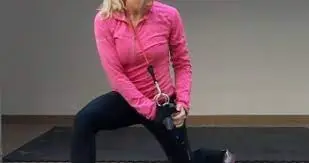
Side plank clap
This is a partner exercise for core rotation. Begin by standing next to your partner in a tall plank position. Clap your hands together below your bodies as each partner raises one hand from the ground. The next step is to rotate your body so that you can reach up with the same hand and clap your hands above your body. Repeat the downward motion of the torso.
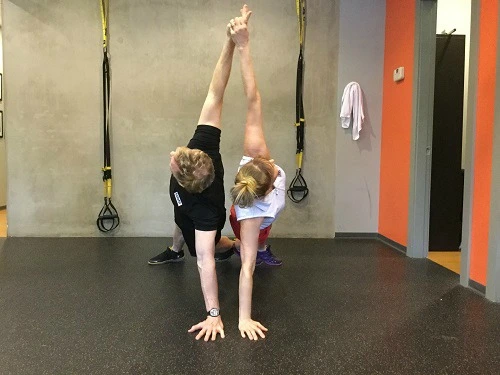
Partner bear crawl hold
The stabilizers of the lumbar spine can benefit from this anti-rotation partner core exercise. To get started, stand in front of your partner in the bear crawl hold position. Clap your hands together as each partner raises one hand off the ground in opposition to the other person’s mirrored position. Always keep your shoulders and hips squared to the side.
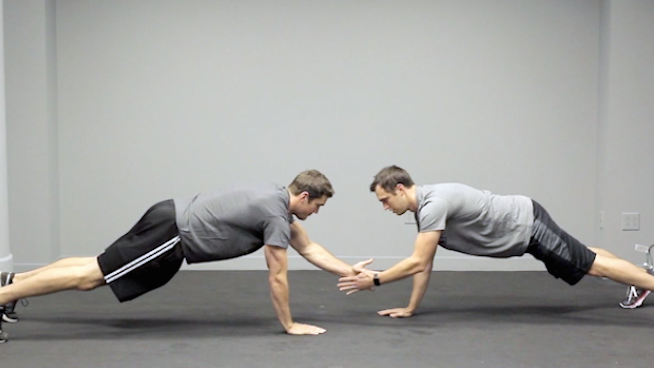
Bear crawl twist
This is a way to strengthen your core. Begin in a bear creep and start to take the contrary foot and hand off of the ground. Extend the knee in front of you while rotating the torso in the opposite direction of the planted hand. Repeat in the opposite direction after tucking everything back into a bear crawl.
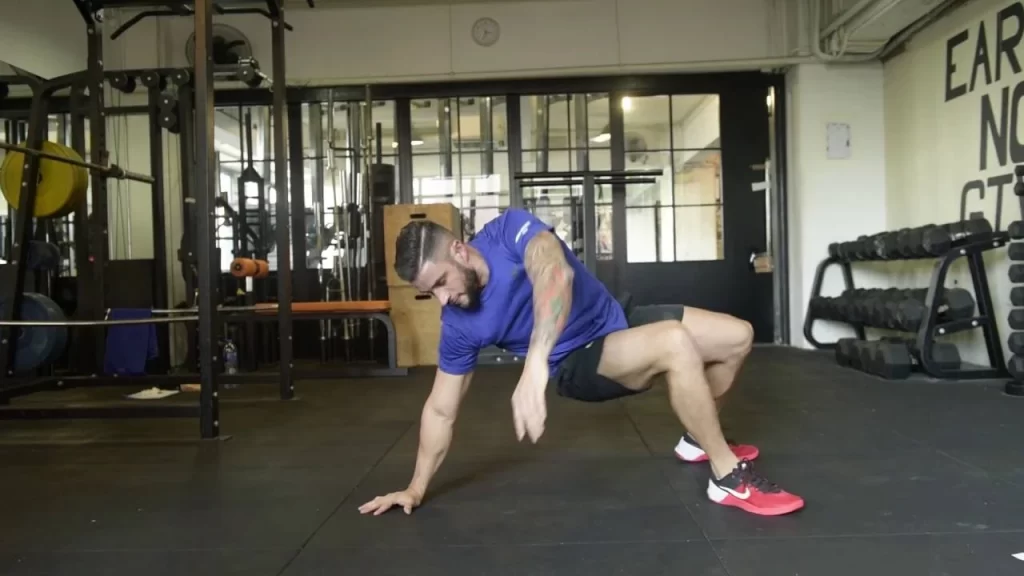
Standing side crunch
This is an exercise for strengthening the spinal lateral flexor. Begin by standing and holding a weight in one hand, such as a kettlebell or dumbbell. Lean to the side as far as you can comfortably go without shifting your hips. Avoid rotating your spine. The next step is to straighten up and contract the muscles on the opposite side by leaning slightly to the side.
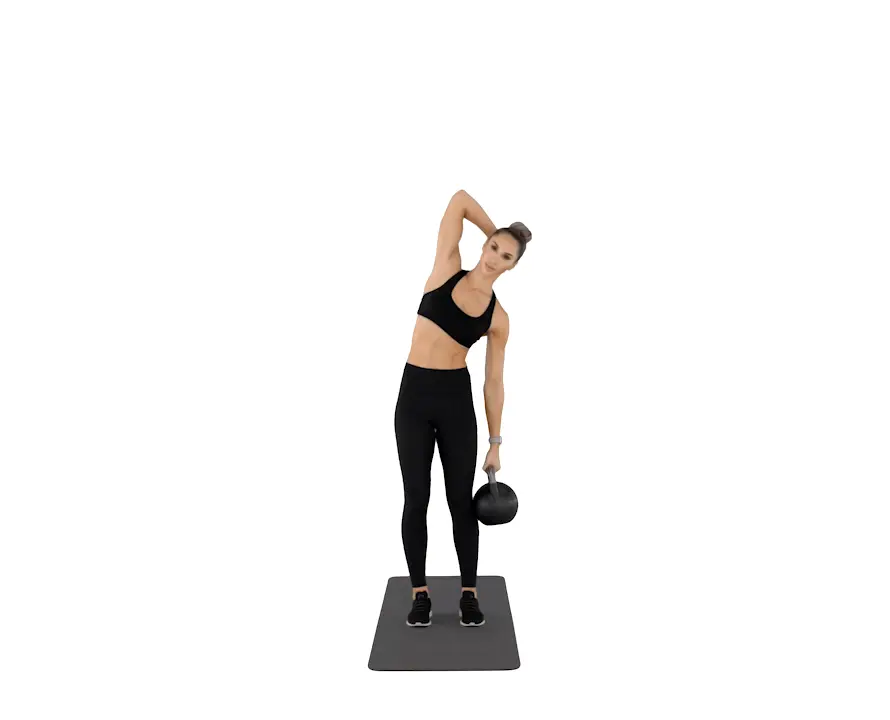
Adductor side plank
For the inner thigh and obliques, this is an endurance and stability exercise. Start by supporting your body with one elbow and your top leg in a side plank. Ensure that the hips and shoulders are squared to the front while maintaining a neutral spine. Bend your knee and raise the bottom foot off the ground.

Side plank crunch
This is a progression of the side plank exercise and a strengthening exercise for the spinal lateral flexors. Start by supporting the body with one leg and an elbow in a side plank. Bend the knee and pull the top leg toward the elbow of your top arm to raise it. Then relax.
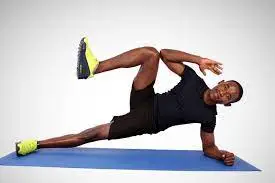
Tall plank shoulder tap
This is an anti-rotation stability-focused core endurance exercise. Maintain a neutral spine and begin in a tall plank position. Place the hands shoulder-distance apart and the feet hip-distance apart. To tap the opposite shoulder, raise one hand without rotating the torso. When lifting the hand off the floor, make sure to keep your shoulders and hips square to the front.
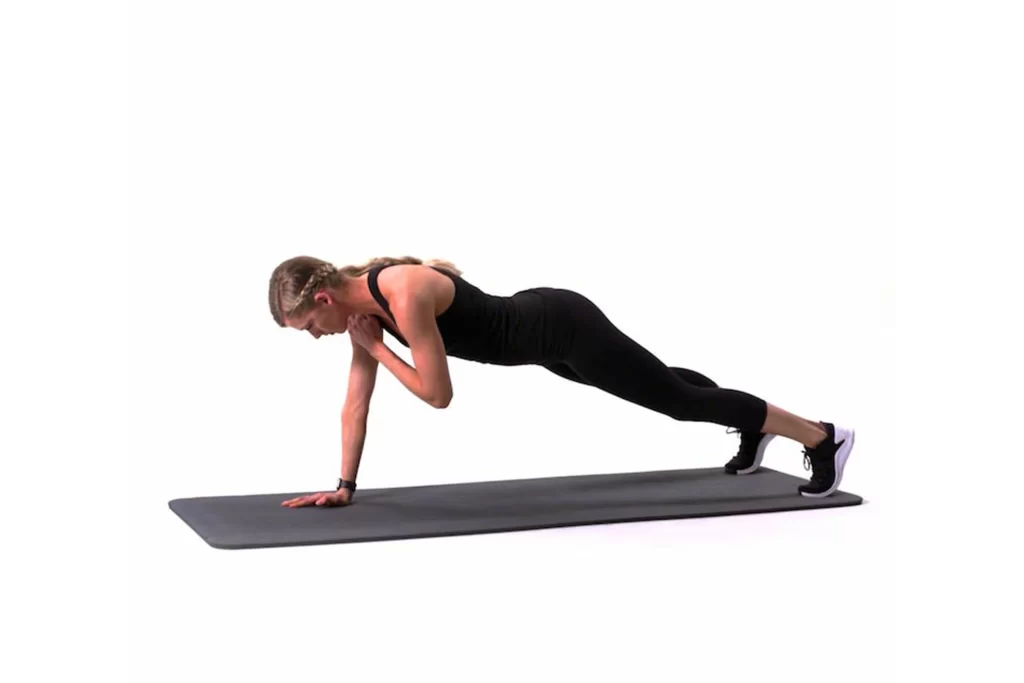
Tall plank knee to elbow
Anti-rotational endurance is the focus of this core strengthening exercise. Maintain a neutral spine and begin in a tall plank position. Place the hands shoulder-distance apart and the feet hip-distance apart. Lift one knee toward the elbow on the same side and return to the starting position without rotating the torso. Reach for the opposite elbow while lifting the knee once more, then return to the beginning. Switch sides and repeat as necessary
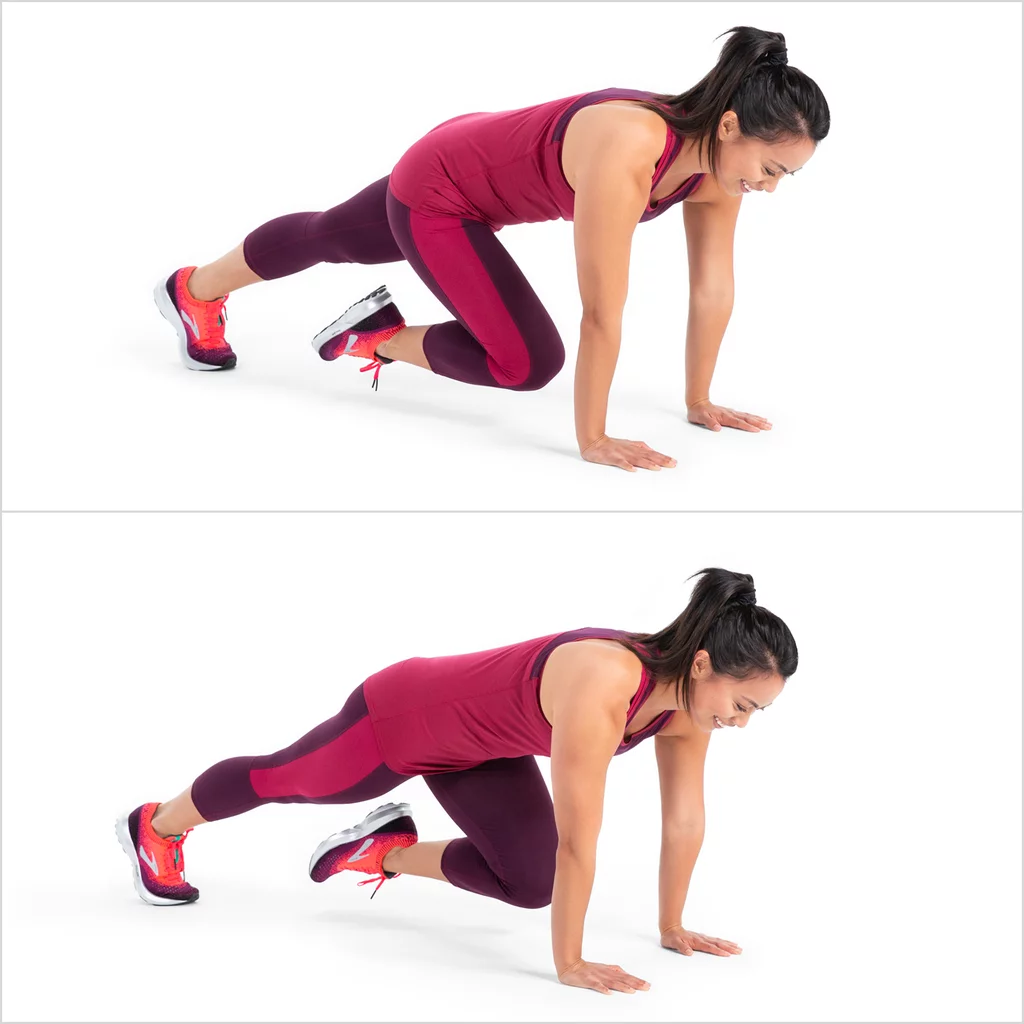
Split squat low high chop
This is a spinal rotator strengthening exercise. While kneeling in a split squat, secure a strength band with a stable object. Grip the band with both hands, starting with the hands closest to your hips. While maintaining straight elbows, raise both hands overhead in the direction of the opposite shoulder. To focus on your core muscles, keep your hips pointing forward.
Low to high wood chop
This is a spinal rotator strengthening exercise. While standing, attach a strength band to a stable object at about knee height and grip it with both hands. Start by raising your hands to your hips and rotating your trunk in the direction of the band. While rotating through the trunk, keep your elbows straight and raise both hands in the direction of the opposite shoulder. To focus on your core muscles, keep your hips pointing forward.
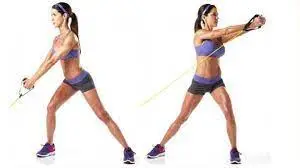
T stretch
This is a mobility exercise for rotating the low back. Begin by lying on your back with your knees straight and your arms spread to the side. Lift one leg until the ankle crosses over the body and reaches for the opposite hand. Alternate sides before returning to the starting position.
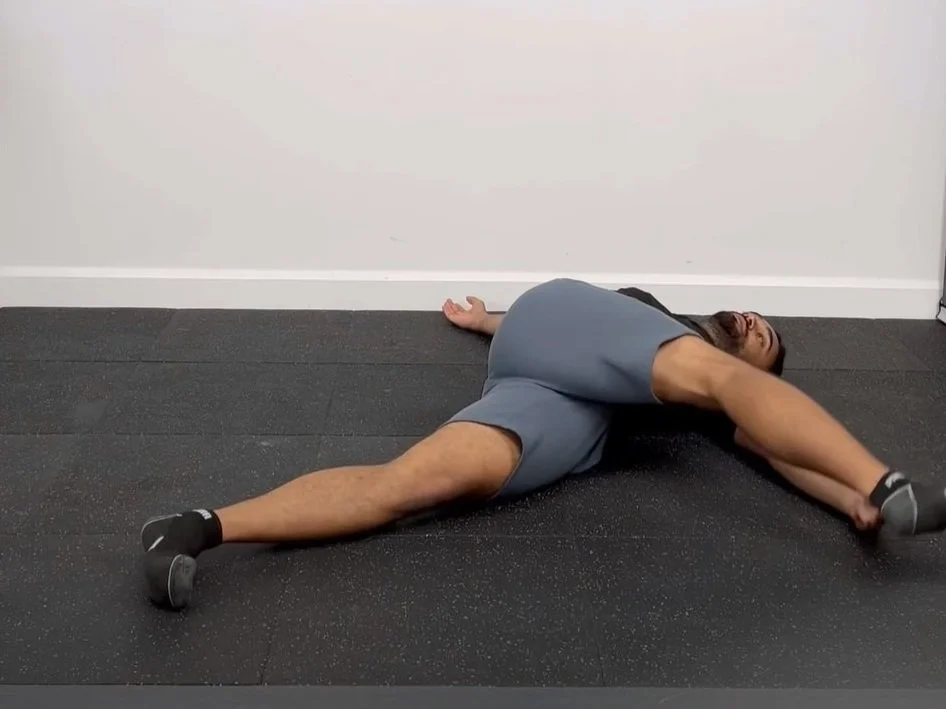
Clubbell isometric rotation
Using a club bell, this is a lumbar stability exercise. With your hands horizontally gripping the handle of the club bell, stand with your feet about hip distance apart. Bend your knees at the hips so that your hands are just in front of your knees. Make sure the weight is directly below and parallel to your armpit when you stand over it. To improve lumbar stability during the movement, keep the latissimus dorsi engaged while bracing the core. Engage the obliques by rotating the torso, then maintain an isometric contraction for 5-7 seconds. Return slowly to the neutral rotation and continue as necessary.
FAQ
Do obliques increase waist size?
In most cases, the obliques won’t show until you start losing layers of fat. However, using more resistance to target these muscles directly makes them bigger. The result is a thicker waist because the obliques are mostly on the sides of your torso.
Are obliques hard to grow?
The muscles on either side of your abs are called the obliques. The two types of oblique muscles are the internal and external obliques. They are difficult to develop and train due to their enormous strength and locational difficulty.
What are the benefits of strong obliques?
Strong oblique muscles help you look and feel better. Working your oblique muscles will not only help you lose fat in your midsection, but it will also help you stand up straighter and have better balance. Additionally, because your spine and hips won’t have to work as hard to keep you upright, you’ll have less lower back pain.
Can I train obliques every day?
Even though strength training should be done two to three times per week, Oblique-strengthening exercises can be performed daily without overtraining. The abdominal muscles rarely get so worn out that you need a rest day.
What exercise activates the obliques the most?
V-Sit. According to a 2013 study that was published in the Journal of Sports Science and Medicine, the V-Sit is by far the bodyweight abs exercise that recruits the most activity in the external oblique muscles.

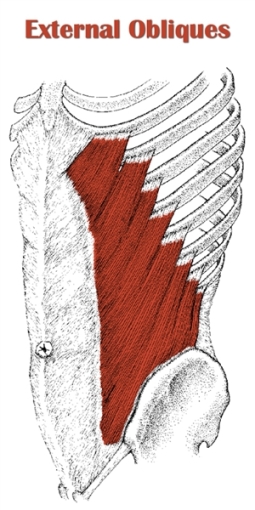
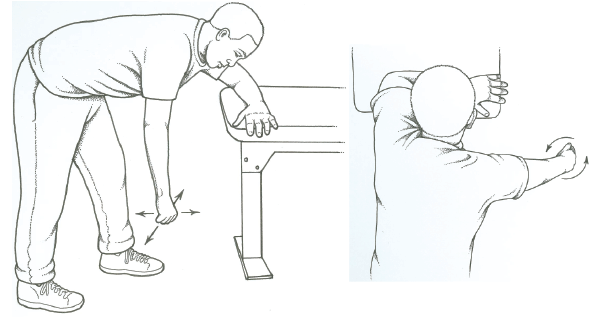
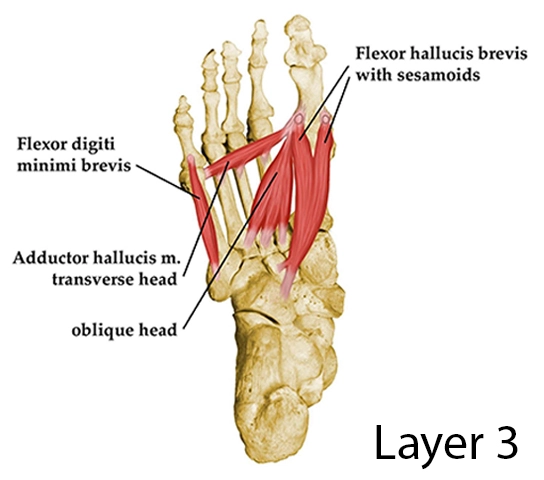
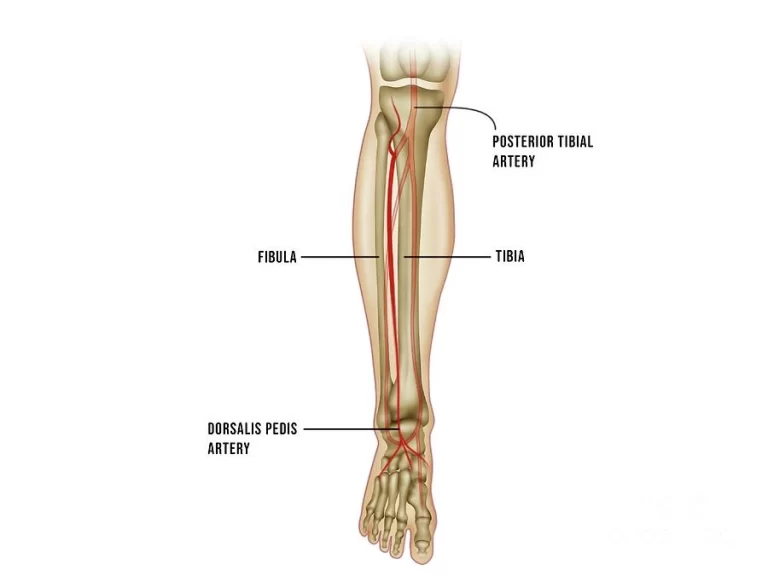
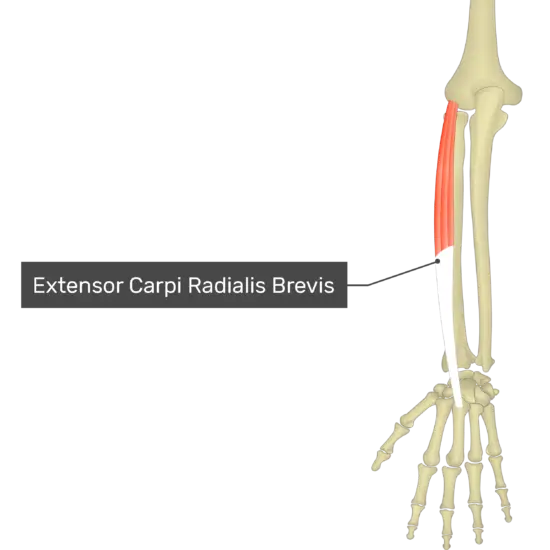
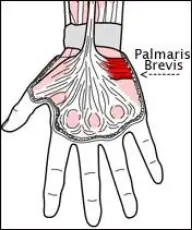
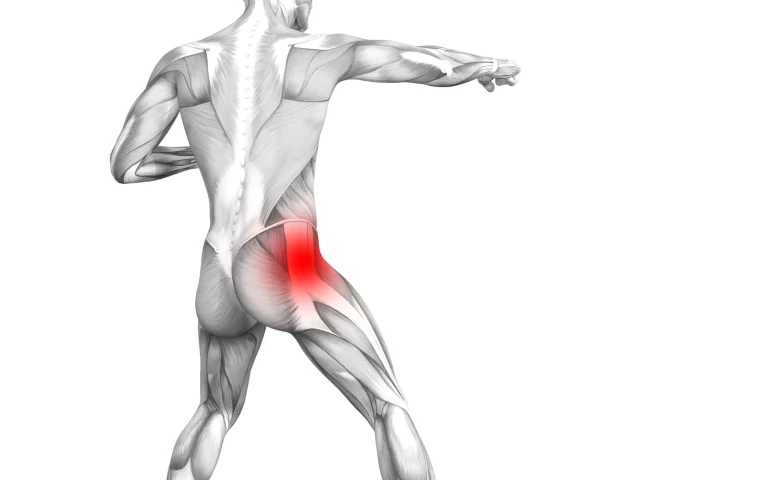
4 Comments